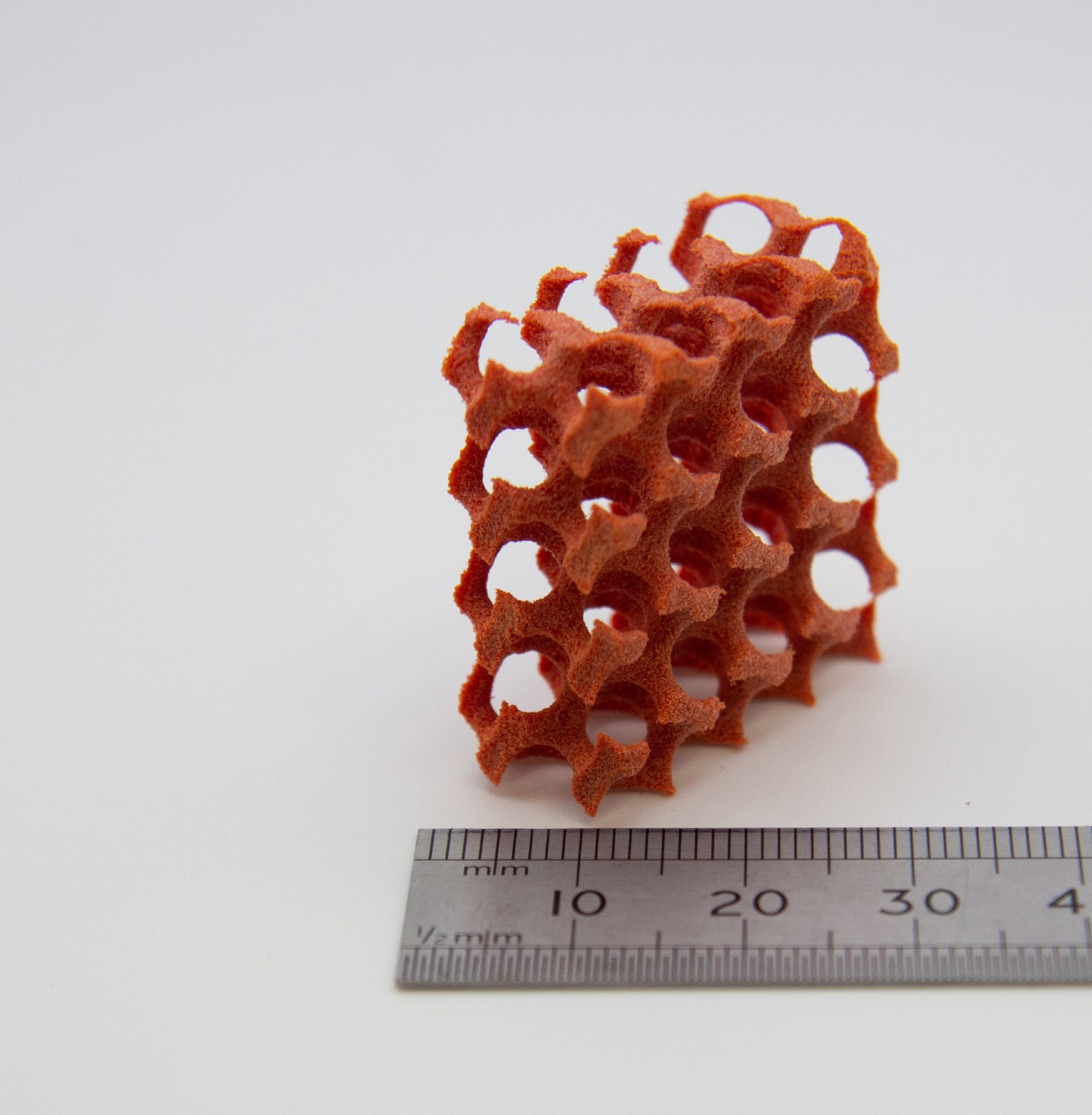Scientists and engineers have developed a new coating for plastic particles that are used in 3D printing, which significantly increases their functionality and opens up new possibilities for commercial application.

Image Credit: University of Nottingham
Researchers from the University of Nottingham’s School of Chemistry and Faculty of Engineering have used supercriticial carbon dioxide to create an efficient, effective and clean process to coat PA-12 polymer particles used in a 3D printing process
The researchers have demonstrated that the new coatings have the ability to add colour and anti-mould and fungal properties to the printing process. The research has been published in Nature Communications.
One of the most common commercial 3D printing techniques is powder bed fusion or laser sintering. In this process a layer of free-flowing polymer powder is laid down and a laser is guided by a computer generated design and melts the powder layer-by-layer. A new layer of powder is applied to the previous layer and once again the laser melts the powder together whilst simultaneously anchoring it to the layer below. This process continues until the designed part is complete, often consisting of thousands of layers.
Polyamide-12 (PA12) is a strong plastic that is often is often used in the 3D printing industry to print complex and detailed parts, commonly deployed in the automotive or aerospace industries.
Professor Christopher Tuck, Professor of Materials Engineering in the Centre for Additive Manufacturing in the Faculty of Engineering at The University of Nottingham said: “The real benefit of 3D printing or additive manufacturing is in the design and production of bespoke and unique objects, but its limitations are in the materials and palette of available properties that limit the overall application space. This new process provides an easy route to the development of a wide range of material capabilities without compromising processability.”
Two key capabilities the new process can deliver are the addition of coatings for colour and anti-fungal and anti-mould properties. Currently the only options for manufacturers are grey or white powders and colour is added afterwards, now the team have created a range of coloured polymers that coat the PA-12 particles.
Professor Steve Howdle, Head of the School of Chemistry at the University of Nottingham said: “There are a few challenges facing the 3D printing industry due to limitations on the functionality of the polymers used. To tackle some of these challenges we have created a simple but effective approach to adding functionality by coating the particles. We’ve designed the coloured shell polymer so that it matches the mechanical and thermal properties of the printing polymer. Most importantly we’ve demonstrated this with the key polymer (PA-12) that is ubiquitous to the industry. And our new coloured polymeric powders work perfectly in the existing commercially deployed machines.”
Currently objects made using PA-12 can’t be used in moist environments due to the growth of mould and fungi. The new shell coating can also be used to develop coatings that prevent this from happening, opening up new possibilities for the use of 3D printed objects in new areas.
Professor Howdle adds: “A key benefit of this process is that it can easily be incorporated into current commercial 3D printing processes and this could be potentially transformative for the industry in widening scope by introducing new functionality, simplifying processes and importantly achieving all of this sustainably.”